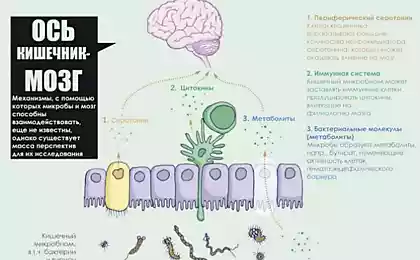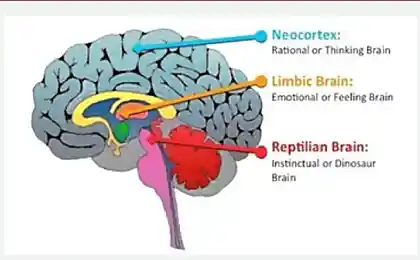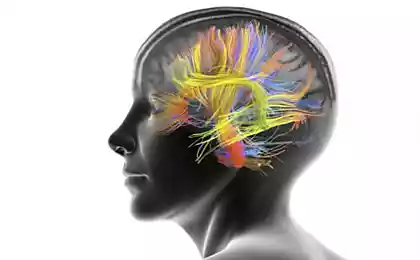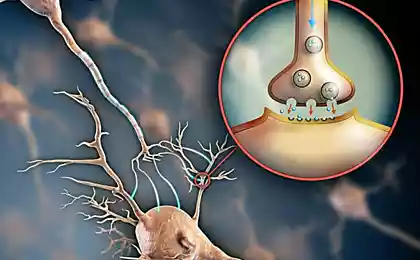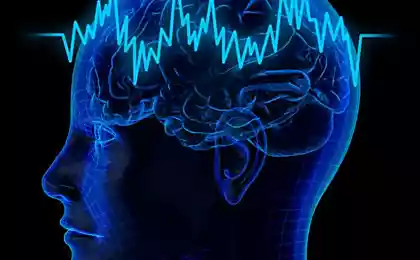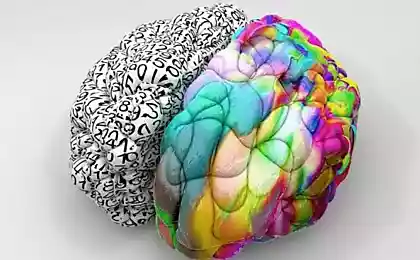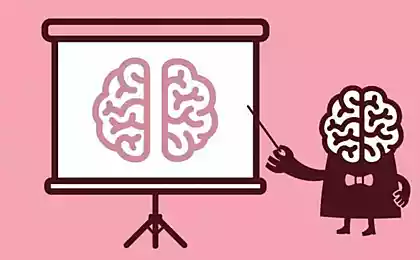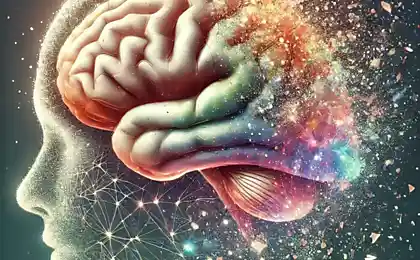751
Gut feel: on the relationship between intestinal microflora and brain function
Editor's note in the original article: axis the “gut-brain” – an imaginary line connected and one of the new horizons complex neuroscience. Gut microbiota (or microflora), which is often now called the “second genome” and the “second brain,” may influence our mood through mechanisms that scientists are only beginning to understand. And, unlike the genes that we inherit, the microflora can be changed and even grown. As soon as studies are transferred from mice not people, we are getting more understanding of the relationships of microflora our brains become visible an important connection with the mental (or emotional) health.
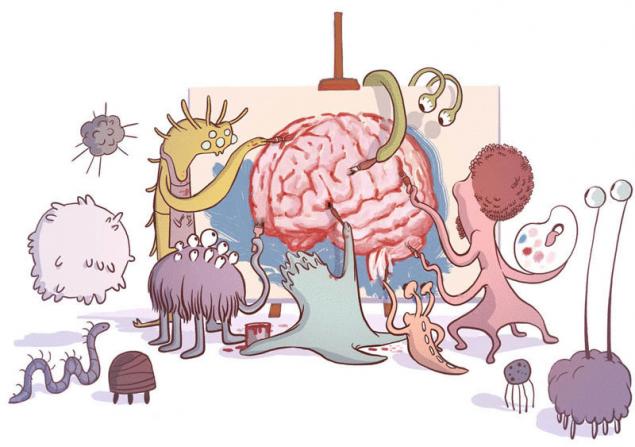
image www.npr.org
Note: footnote (live links to studies) can be found in the original article in English.
I'm a scientist, and often even in conversations with neighbors slips something from the latest advances in neuro - Sciences. And in the last few years I noticed that more and more people are interested in microorganisms – microorganisms colonizing our bodies, our bodies. The last 10 years I'm busy in the area of science, where we develop new assumptions about how the gut microbiota influence brain function. Now write about it already in the press, including the New York Times (the translation of this material is on the site ECOWAYS, see Tag "microflora") in National Geographic. In 2012, the editors of the journal Science considered the studies important enough to dedicate the theme of the whole room.
Why we consider this topic so exciting? For starters, increased the level of awareness in nutrition: are we getting closer to the recognition of how directly the nutrition and choice of diet affect our health. And besides, look at the numbers! The brain consists of billions of neurons, and intestines – trillions of “good” bacteria, but we're talking much less. It is noteworthy that these bacteria naturally in the fall we always present our “symbionts” (friendly bacteria whose livelihoods benefits carrier) can be a tool, or means of influencing the development of our brains, shaping our behavior and reactions to stress that affect how our body accepts the treatment (e.g. medication for depression or anxiety).
Given these serious effects on mental health in academia is the theme of the mutual influence of this conditional eternal bundle attracts more attention. I do not cease to impress, what inventive ways of coming up with my colleagues in order to advance in their research, particularly in order to investigate how the microbiota can affect brain and immune system in the first years of life. And just last week scientists from UCLA have discovered that regular intake of yogurt with live probiotics (that is, containing “good” bacteria) seem to affect how the brain works in women.
Cause and effect
Scientists have recognized communication between the brain and the gut for more than a hundred years ago: in the early nineteenth century, and then again in the early twentieth, it was proved that emotional state can influence the work of his intestine (1-3) One of the best examples of this is the work of William beaumont (William Beaumont), military surgeon, who became famous as the “father of astropsychology” (gastroenterology). In the 1830s he had the opportunity to observe the secretion of gastric juice through a fistula (permanent hole through the stomach of the patient). And in the first decade of the twentieth century examined the effects of stress on the body and human health and found no Association between the quality of human response to stress and the way you worked the bowel. This is the classic understanding of vertical system of control (i.e. that the brain affects the functioning of other organs, including the intestines) is bolstered by the fact that the commands from the brain to the body, including the intestine, are passed through the neural connections of the autonomic nervous system and through humoral system in the blood stream. Both of these communication channel aktiviziruyutsya in moments of stress and have an effect on the digestive system. Amazing and new in this story is that now began to consider the inverse relationship, the “bottom up” — that is, found that the intestine, and more specifically, intestinal microflora, can affect the brain. Recently, scientists have shown that the presence of intestinal microflora at early stage of development affects the topology of the neurons (the set of properties of whole sections of the brain) associated with anxiety and depressive States. Intestinal microflora associated with a specific behavior, stress, and diseases associated with stress. Changes in the intestinal microflora can influence the risk of disease development, and control of microflora may be a new method of intervention in situations that have already reached the clinical stage (in the area of affective and anxiety disorders).
Picture from the inside
Normal symbiotic (friendly) microflora inhabits the intestines of mammals and other internal areas of the body soon after birth and persists in the body throughout life. The man in the large intestine (lower division) contains bacteria from 10 to the 14th to 10 to the 15th degree, that is, in the intestine in 10 or even 100 times more bacteria than cells in our body (4).
Coexistence of symbiotic microflora and its media, for the most part, mutually beneficial. In particular, the presence of symbionts is essential for the functioning of our immune system, digest nutrients and other aspects of healthy physiology... (5, 6) Using the most modern tools to study genetics and tissues at the molecular level, scientists were able to demonstrate that in the gut are a few types of bacteria, and that symbiotic populations are characterized by great variety: you can allocate up to thousands of different species (7) In addition, the formation of individual microflora is constantly influenced by such factors as gender, genetics, age, type of food (8, 9) In healthy people, biological diversity is much more but at the same time, studying the microflora of these people in different moments of time (a few months, you can see that the composition hardly changes. (4, 10, 12) But in stressful situations or in response to physiological or dietary changes, microflora can also change, creating an imbalance in the interaction between microflora and its host. And such changes can affect human health.
See the light!
The intestinal microflora is very important for healthy brain development. For example, it can influence the development of the brain, which formed a reaction to the stress in the areas that control condition, caused by stress such as anxiety or depression. In trying to understand these relationships, scientists in any way shape microflora in mice: the insulators are grown for the special, “sterile” mice with no microbiota and then they are made of a variety of bacterial measurements.
The contents in isolation precludes any contact with the outside air, any impurities or symbiotic bacteria “from the outside”. Thereafter, the standard experiments for the study of changes in behavior: measured activity level, curiosity, tendency to avoid contact. Mice have a natural inclination to the study of the area, but they always try to avoid open and brightly lit places. Their behavior is tested in a special labyrinth, designed so that mice were options for how to Express your research interest. When a normal (“control”), the mouse gets into the maze, she tries to explore both “sleeves” that extend in both directions from the zone into which it originally “planted” in the center. In this case, the mouse tends to spend more time exploring the closed, darkened sleeve. When the labyrinth is placed a sterile mouse, it seeks much more time to spend in the lighted sleeve. And this leads to the assumption that no microflora less manifest anxiety, as sterile mice spend more time in the “danger” zone of the maze. (13, 14)
For another test monitoring the behavior of using the box in which one of the parts shaded, and the second is open world. The control mouse is exploring both areas, but pays more attention to dark. Sterile mouse longer studying light area, again demonstrating that mice without intestinal microflora are less susceptible to anxiety because a bright area for mice in the experiment is considered to be stressful, but sterile mice is not alarming.
Observing sterile mice, the researchers were able to figure out whether there are some specific stages in the life of the mouse when the interaction between the brain and the intestinal microflora is especially important. The sterile mice were placed in normal mice in terms of different “age” (at different stages of their development) and showed that their gut when it colonizes a typical population of bacteria. This is reflected in the normalization of the immature immune system, characteristic of sterile mice. When the adults are sterile individuals “were subjected to the” colonisation of normal bacteria, they continued to show reduced levels of anxiety, and it suggests that the absence of microflora in the early stages of development has a permanent effect on how the brain regulates anxiety and behavioral manifestations associated with the research boost. (14, 16)
In contrast, when the microflora was inhabited sterile mice at early stages of their life (young or individuals, recently of age) and then tested them already at the stage of their maturity, usually mice showed normal levels of exposure to stress and anxiety in stressful situations (13, 15) and this suggests that the microflora affects the way the brain is formed in the early stages of life.(17)
In addition to studies in mice, the researchers used antibiotics to influence the microflora. It has been proven that the presence of antibiotics in drinking water leads to reduce populations of bacteria in mice and to reduce diversity within this population. (18) the Tests showed that both the sterile mice and treated with antibiotics during the week, showed the increase of curiosity (the activation of exploratory behavior) and the decrease in the manifestations of anxiety. This observation was associated with changes in the microflora. (19) two weeks after the end of the week on antibiotics and quality of the microflora and the behaviour was restored to normal threshold, and this suggests that temporary changes in the microflora can influence behavior.(19)
The right ways
By setting the relationship between intestinal microflora, brain, and behavior, it is interesting to reflect on how, in fact, is how the microflora interacts with the brain. Of course, the classic theory is that the neural connections in the brain transmit signals from nerve endings (peripheral nervous system), and in particular involved the so-called vagus nerve, which transmits signals to the brain from the intestines. Evidence that bacteria in the gut can act, sending signals, using this bundle, are illustrated by the following experiment: mice “tucked” pathogenic bacteria such as Citrobacter rodentium and Campylobacter jejuni, and it activated the “channel of communication” that is associated with blujdayuschie nerve and the corresponding region in the brain.(20, 21)
It was discovered that this neural connection aktiviziruyutsya even in the absence of peripheral immune responses, suggesting direct connection between gut bacteria and the nervous system. A recent study showed that if you feed healthy mice probiotics, i.e. “good bacteria”, they have decreased anxiety and depressive behavior compared to the control group (22) , and another study showed that feeding probiotics activates neurons in the hypothalamus – brain region that plays a major role in the development of stress reactions. (23)
In this study, it was found that the activation of neurons in the hypothalamus was more intense when the mice were given pathogenic bacteria, and this led to a more active peripheral immune response. From this we can deduce that the peripheral nerve endings and immune molecules in the blood, transmit signals, can facilitate the communication between the gut and the brain. (23) the Hypothalamus – the control center of the Autonomous nervous system, and there are strong arguments in favor of psychological, physiological and pathological problems may activate the hypothalamus and run the “stress response”. It is striking that the channel of communication between intestinal microflora and brain also leads to the activation of this most important region in the brain.
This work defines how communication between the gut and the brain is established at the neural level, but there is another important channel of communication – the immune system. It is possible to call two components: the innate immune system and adaptive or acquired immunity. From sterile mice the adaptive immune system is not developed. Because the intestinal microflora plays a key role in the development of immunity, we can assume that sterile mice, the inflammatory processes are always quiet. When we consider the relationship between inflammation and disturbing behavior, we can observe that the lowest anxiety is found in the same place where inflammatory processes are not strongly expressed, but a more severe inflammation leads to increased anxiety.(17)
For example, infection of mice with the parasite Trichuris muris leads to inflammation in the gut and increase levels of anxiety.(24) In addition, chemically induced inflammation (colitis) also leads to increased anxiety.(24) In the same studies provided the evidence that the microbiota acts as a modulator of anxiety in this behavior associated with the immune response: the report States that “treatment” probiotic culture Bifidobacterium longum reduced this anxiety.(24,25) These observations suggest that the appointment of probiotics may be a promising approach in the treatment of inflammatory processes and related symptoms of “anxiety”.
Bacteria-symbionts play an important role in ensuring colon health, and in stressful situations or during the disease increased gut permeability can lead to increased inflammation.(26), Increased permeability of the intestinal wall (often this condition is called “leaky gut syndrome” can lead to migration of bacteria beyond the intestinal tract in the “foreign” environment.
This is an additional way which the microbiota (microbiota) and pathogenic bacteria can use for communication with the brain, where the communication channel becomes immune system, it is either due to activation of local neurons of the autonomic nervous system. She, in turn, is part of the Autonomous (General vegetative) nervous system based in the gut responsible for peristalsis and the normal implementation of other functions of the intestine. (28) Is a vast network of neurons acting as the first link in the contact between the microflora and the brain, they are an important component in the bond brain-gut.
The stress factor
One of the most common signs of depression – the disorder in the system responsible for response to stress, based on “axis” gipotalamus-adrenal axis.(29) As mentioned above, in response to physiological, psychological or pathological stimulus, neurons in the hypothalamus are activated and sent to the pituitary signal, calling to throw in the blood adrenocorticotropic hormone, which, in turn, activates the adrenal glands, they immediately released the stress hormone – cortisol. This “stress response” is part of the normal process, but in depression it often runs too fast or, sometimes, on the contrary, the reaction is too sluggish. (29) One of the first studies examining the relationship of stress and microflora showed that sterile mice, the stress response is too intense.(23) And another, more recent study showed that exposure to stress of rats “in his youth” causes changes in the composition of the microflora and leads to more intense stress reactions in adulthood. (30) it is Important that this study found that if the rats give a probiotic (Lactobacillus sp) it normalizes levels of stress hormones.(30)Stress in early life leads to a more depressive behavior in Mature rats. Another similar study showed that if rat youngsters are vulnerable to stress, give probiotics (bacteria Bifiodo infantis), reduced symptoms of depression in adulthood. (31)
Together, these studies suggests the need to recognize the link between microflora imbalance (dysbiosis), changes in behaviour related to stress and stress reaction. Also this suggests that the use of probiotics may be effective in the treatment of symptoms associated with stress.
At the moment, there have been few studies that have linked stress and microflora in humans. There are no data on the direct relationship between the composition of microflora and of depression or States of anxiety. The most promising of clinical studies demonstrates that the use of probiotics in humans may have antidepressant and sedative effect. There's a study in which healthy people 30 days were given probiotics. Subjects were asked to answer a series of questions to determine the effects: focused on stress, anxiety, symptoms of depression, the capacity to withstand stress. The results showed that those who received probiotics, showed a lower susceptibility to stress than the control group.(32) In another study, researchers were able to demonstrate that healthy people with a bad mood in the beginning of the experiment demonstrated an improvement in mood after intake of probiotics for three weeks.(33) finally, in a clinical study of people with chronic fatigue syndrome the use of probiotics for 2.5 months resulted in the reduction of symptoms associated with anxiety.(34) These works demonstrate that modern clinical research confirms the important role of microflora in the formation of anxiety and depressive States. They also demonstrate the potential for treatment with probiotics.
Prospects
There is no doubt that in the last ten years, studies have established a definite link between intestinal microflora and brain function in mice. Through these works we realized that:
1) intestinal microflora (microbiota) – a huge population, important for healthy metabolism and brain function
2) communication between the gut and the brain is also through neural connections
3) the intestinal microflora is very important at an early age and can influence what reactions to stress will be developed in the brain
4) probiotics (research on humans and animals have shown that probiotics or in other words “good bacteria”, have a positive impact on mood. Although this is a very promising open, no need to rush and think that we have already found a solution for clinical situations (disorders of conduct and mood). Of course, the microflora is an important modulator of health and must be considered a component of a complex, multi-faceted system of communication, which is necessary to establish a healthy balance for the development and healthy functioning of the brain. Now research in this area conducted around the world, scientists strive to understand as much as possible. Stay tuned! published
Author: Jane Foster (Jane Foster)
Original article: dana.org/news/cerebrum/detail.aspx?id=44080
The link to the original English can also be seen as a whole, all references to research are marked in our translation numbers in parentheses.
P. S. And remember, only by changing their consumption — together we change the world! ©
Source: ecoways.ru/ru/rss/articles/o_svazi_mikroflori_i_funktsij_golovnogo_mozga.html
